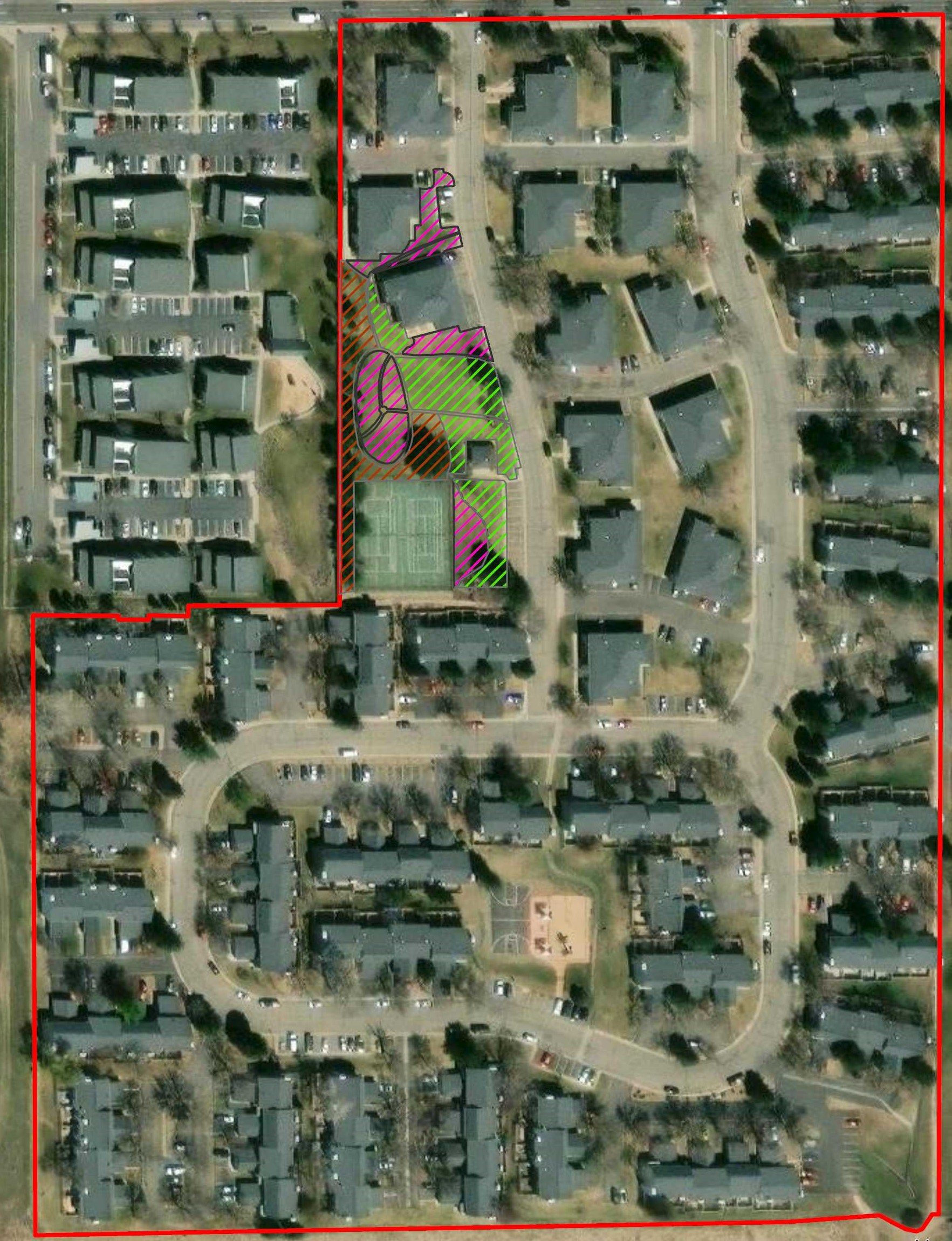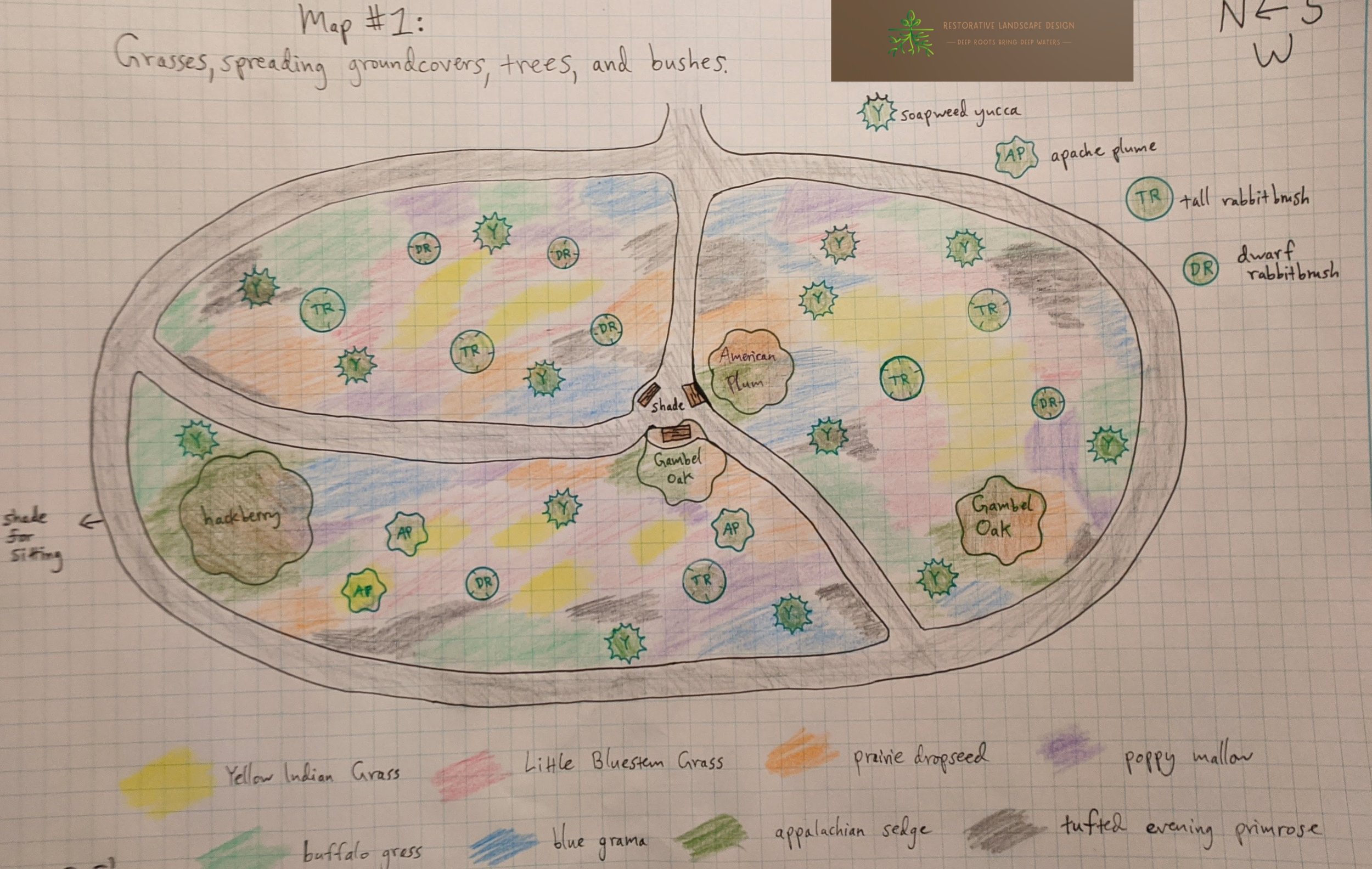From Kentucky Bluegrass to Habitat Hero at my HOA: Involve your community
By Airy Adriana Peralta
Habitat depletion, biodiversity loss, natural resources pollution, and pandemics are all consequences of human action. In our quest to solve those problems, we frequently approach them on a one-by-one basis forgetting that everything is interconnected through every scale of our system. Over the years, educational efforts have built understanding in our society about the need for change toward sustainability. Still, in my opinion, there has been little change when considering humans' capacity to innovate.
At the scale of my Homeowners Association (HOA), we face several problems that might be familiar if you, like me, also live in an HOA. We have enormous water and landscape maintenance costs for our 6 acres of lawn. We are concerned with the misuse and overuse of pesticides sprayed on the turf that our dogs and kids play on. We scramble to keep our community affordable while raising our HOA fees to cover inflation and the deterioration of our 34 years old community. If that wasn't enough, we now must deal with the higher cost of HOA insurance due to the 2021 Marshall Fire.
Centaur Village West HOA is located in southeast Lafayette inside Boulder County. It neighbors a small community of Boulder’s affordable housing, the Harney-Lastoka Open Space Trail, and Centaur High School. The community manages 6.45 acres of green area, which is currently predominantly lawn. It host 278 households of a mix of homeowners and renters who fall in the low to middle-income category. Etna Park (sketched green, pink, and brown areas) will be redesigned to convert turf to native plantings.
In 2021, I thought "is there any way to tackle many of these problems at one time?” The knowledge I have gathered through my doctoral education said yes, and the idea to convert our turf to native gardens was born. Native habitats and species diversity in these spaces provide ecosystem services that help regulate natural cycles and promote a healthy environment where humans and other species can live (Chapin et al., 2020). Air purification, pollination, water filtering, biological control, and soil creation are some essential services that species, in a collective effort, help carry (Chapin et al., 2020).
Because habitats with few species risk our environment and living quality, lawns are costly when assessed from ecological and economic aspects (Chapin et al., 2020). Turf grasses require maintenance expenses that can be substantially diminished when converting to native gardens (Mariner, R. et al. 2004). Native gardens host plant species adapted to local environmental conditions, like drought, saving up to four-fifths of what conventional landscape maintenance would cost (Mariner, R. et al. 2004). According to the Environmental Protection Agency, savings include labor, water, fertilizers, herbicides, insecticides, fungicides, gas for lawn equipment, and mowing (Mariner, R. et al. 2004).
Etna Park is currently a communal turf grass area with a shade pavilion.
Although there is much information on the web regarding native gardens' benefits, there is also misinformation and skepticism about things that most of us have never experienced. Advocating for turf conversion to native plants was not easy in my community. One of the barriers was that community members have different points of view and diverse interests motivating them. While some people care about nature, others care about saving money, and others care about public health. My plan needed to be holistic.
We held meetings to listen to the community’s concerns about our current and future landscape. We assessed the water consumption during the irrigation season. We disseminated the water consumption analysis outcomes to create awareness.
In June 2022, we involved community members of all ages in the main garden design of Etna Park, which will guide our efforts through each phase of implementing the changes in the following years.
General design for the updated communal open spaces in the HOA. This plan integrates native plantings with useful spaces for kids to play, picnicking, quiet contemplation, and community gardening.
Starting with garden-1 (circular area near the center of design), we needed a detailed design to be able to implement the planting but this was beyond the community's budget for that year. We applied for funding from Boulder County Audubon Society to allow us to create the detailed design for garden-1. We thank Boulder County Audubon for being a catalyst for change.
Our design for garden-1 won the Water-Efficient Landscape grant from Northern Water of Colorado 2022, allowing us to start implementing the plan by building both garden-1 and the surrounding woodchip area.
This year, we are preparing to convert 17,000 square feet into a beautiful and healthy Habitat Hero Garden during the first week of summer. Garden-1 will be a little over 5,000 square feet and host 1682 native plants of 36 species; we got diversity! Around garden-1, nearly 12,000 square feet will be converted into a treed area where people can have picnics while enjoying our pollinators and birds.
Garden-1 design for grasses, spreading ground covers, trees, and bushes (top, Map 1) and for forbs (bottom, Map 2).
With the redesign, we wonder whether we will have a difference in the number of species of birds visiting our garden before and after the garden conversion; thus, we have been using The Cornell Lab's Merlin ID App to identify birds by sound. Over the last two summers, we have identified 13 species; my favorites are the Red-breasted Nuthatch and the Great Horned Owl.
Learn more about the project management hurdles and progress of this restorative effort, plus see pictures of the final outcome in future articles published in On The Wings and here on BCAS’s website.
Chapin III, F. S. et al. Consequences of changing biodiversity. Nature 405, 234–242 (2000).
Mariner, R. et al. Sourcebook on Natural Landscaping for Local Officials. (United States Environmental Protection Agency & Northeastern Illinois Planning Commission, 2004).
About the Author
Airy Adriana Peralta is a Mexican Ecology and Evolutionary Biology PhD student at the University of Colorado Boulder. For her research she is interested in how natural and anthropogenic changes affect the ecology of endangered species. Currently she is studying the microclimatic environment in rock taluses to understand how these environments influence the distribution of alpine species like the American pika, the canary in the coal mine for climate change. She also aims to understand whether these microclimates will persist as human-aided climate change advances. In addition, she is an advocate for sustainable living in her local community.
Interested in Incorporating Native Plans into Your Own or Your HOA’s Landscaping?
Boulder County Audubon is supporting of the Habitat Heroes program and provides resources to learn more about incorporating native plants in your landscaping.





